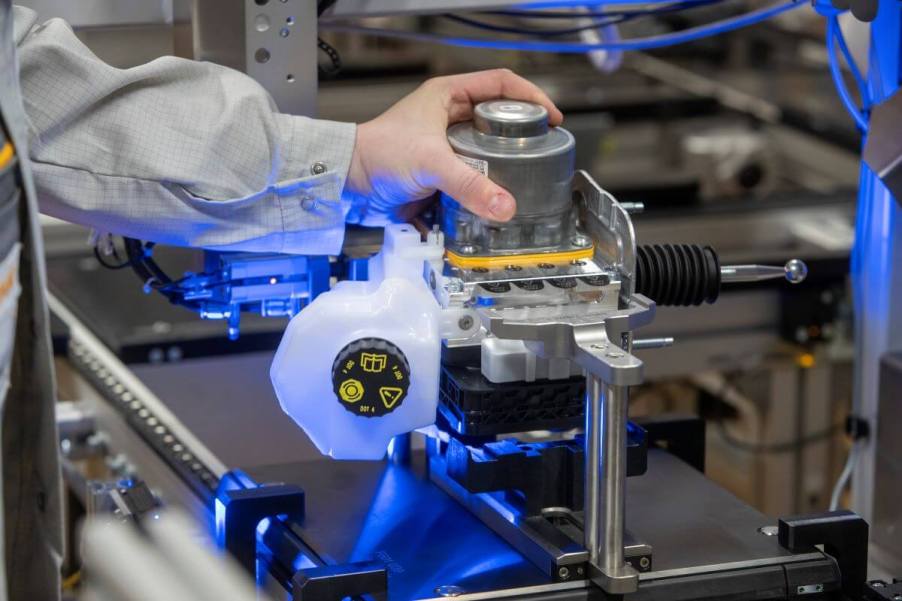
The 3 Most Common Types of Brake Booster Systems and How They Differ
Power brakes are a common feature that improves safety and performance. It’s been a typical standard feature on most new cars going all the way back to the 1980s. However, if you’re working on a resto-mod or you just drive an old car without power brakes, upgrading to a more modern braking system is worth serious consideration.
The essential part of a power braking system is a brake booster. A brake booster uses the car’s engine as a vacuum source to multiply the force applied to the brakes without much effort from the driver. There are a few different types of power braking systems, and they all use some form of a brake booster, but they achieve the same goal in different ways. Let’s take a look at three different types of brake booster systems.
1. Electro-Hydraulic
Electro-hydraulic brake systems are also known as “brake-by-wire” systems, according to Novus Glass. As its name implies, it modulates the brakes electronically rather than relying on a manually actuated hydraulic system. It’s a simpler, lighter system than a traditional vacuum power braking system and requires fewer components. It technically doesn’t use a brake booster, but some cars with brake-by-wire systems have a brake booster as a fail-safe.
Electro-hydraulic braking systems are becoming common in modern performance cars, hybrids, and electric vehicles. Regenerative braking systems on EVs and plug-in hybrids have electronic braking systems for their regenerative braking, as well as friction braking systems.
2. Hydro-Boost
Hydro-boost brake systems refer to a type of power brake fed by the power steering pump rather than the engine. It feeds hydraulic pressure into the master cylinder of the braking system to multiply braking effort giving you the safety and performance advantages of power brakes.
This was used as factory equipment on some GM trucks and SUVs for a while in the 2000s, and it’s a popular option among hot-rodders. It adds some clutter to the engine bay and creates more reliance on your power steering pump working. If the power steering pump goes out for some reason, you’ll also lose the functionality of your power brakes.
3. Vacuum
A vacuum-style brake booster is the most common type. This is probably the type of brake booster in your vehicle. According to BuyBrakes, a vacuum brake booster uses the car’s engine as a vacuum source to fill a chamber with pressure it can use to multiply brake effort. When you depress the brake pedal, that force is applied by pushing brake fluid through the brake lines to your brake calipers, applying the disc brakes.
This is a reliable system that uses parts that are common and affordable. It’s also an easy system to service, generally with low maintenance costs. For the most part, regular brake fluid changes are the only maintenance it needs.
Next time you’re shopping for a car, consider what type of power braking system it has. Most will have vacuum-style brakes, but a modern brake-by-wire system can provide even greater safety and performance.



